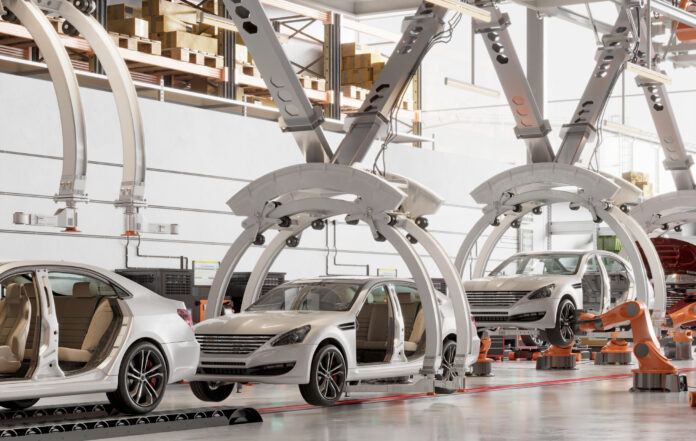
The automotive industry, known for its innovations in design, performance, and technology, now finds itself at the crossroads of a different kind of revolution – one fueled by sustainability and environmental responsibility. With growing concerns about climate change, resource scarcity, and the environmental impact of vehicular production, circular economy practices are gaining prominence in automotive manufacturing. In this article, we will take you on an enlightening journey through the world of circular economy practices in automotive manufacturing, exploring how these strategies are reshaping the industry while simultaneously reducing waste and minimizing the environmental footprint.
Recycling and Remanufacturing: Extending Component Lifespan
Recycling and remanufacturing lie at the heart of circular economy practices in automotive manufacturing. These are designed to extend the lifespan of vehicle components and are a testament to the industry’s commitment to reducing waste and conserving resources.
A Second Life for Components
In the automotive world, components that were once deemed outdated are now given a second chance. Engines, transmissions, and even vehicle frames can be recycled or remanufactured to OEM (original equipment manufacturer) specifications. The benefits are twofold: waste reduction and resource conservation.
Environmental and Economic Gains
Recycling and remanufacturing help in reducing waste and conserving energy compared to manufacturing entirely new components. It’s a win-win situation – not only does it reduce the environmental footprint of the industry, but it also makes economic sense.
Design for Disassembly: Sustainable Vehicle Creation
Design for disassembly is a forward-looking concept that’s changing the way vehicles are created. It focuses on creating vehicles that are not only high-performing but also easy to disassemble and recycle at the end of their life cycle.
Simplifying Disassembly
The implementation of modular designs, standardized fasteners, and clear material labeling facilitates the disassembly process, making it easier to recover valuable materials.
Impact on Recycling and End-of-Life Processing
Designing for disassembly streamlines recycling efforts and reduces the complexity and cost of end-of-life vehicle processing. It’s an approach that benefits both the environment and the industry’s bottom line.
Closed-Loop Supply Chains: Sustainable Material Sourcing
Closed-loop supply chains are another cornerstone of circular economy practices in automotive manufacturing. These supply chains aim to minimize waste and environmental impact by ensuring materials circulate within the system.
Materials in Circulation
Materials like aluminum, steel, and plastics are being sourced through closed-loop systems, reducing the need for resource-intensive extraction and production. This approach significantly lowers the environmental impact of material sourcing.
Benefits of Closed-Loop Supply Chains
By closing the loop, manufacturers guarantee a consistent supply of recycled materials, reducing the industry’s reliance on virgin resources. It’s a sustainability initiative that’s good for the planet and the bottom line.
3D Printing and Additive Manufacturing: Efficiency and Minimal Waste
Enter the world of 3D printing and additive manufacturing, where imagination knows no bounds. This transformative technology is revolutionizing automotive manufacturing by reducing waste and enabling the production of complex, lightweight parts.
Precision and Efficiency
3D printing optimizes material usage, producing components with minimal waste. It also allows for the creation of lightweight, resource-efficient vehicle parts, enhancing fuel efficiency and reducing emissions.
Advancing Sustainability in Vehicle Production
The implications of 3D printing extend far beyond waste reduction. This technology is driving sustainability in automotive manufacturing, paving the way for a more eco-friendly industry.
Extended Producer Responsibility (EPR): A Holistic Approach
Governments around the world are implementing Extended Producer Responsibility (EPR) programs, demanding that automakers take responsibility for their products throughout their entire lifecycle, including disposal.
Encouraging Responsible Product Lifecycles
EPR programs encourage automakers to design products with recycling and environmental impact in mind from the very beginning. This approach is transforming automotive manufacturing and end-of-life management.
Transforming the Industry
EPR is not just a regulatory requirement; it’s a transformative initiative that’s making automakers stewards of sustainability, not just producers of vehicles.
Meet Demand with Sustainable Design
The winds of change are sweeping through the automotive industry, ushering in a new era of sustainability, innovation, and environmental responsibility. Circular economy practices are revolutionizing automotive manufacturing, reducing waste, conserving resources, and leaving a smaller environmental footprint.
As consumers increasingly demand eco-friendly solutions, automakers are embracing sustainable practices not just as a responsibility but as a source of competitive advantage and innovation. With each day that passes, the industry is propelling itself toward a greener, more sustainable future. In the automotive world, sustainability isn’t just a trend; it’s a dynamic transformation that promises a brighter tomorrow for us all.




